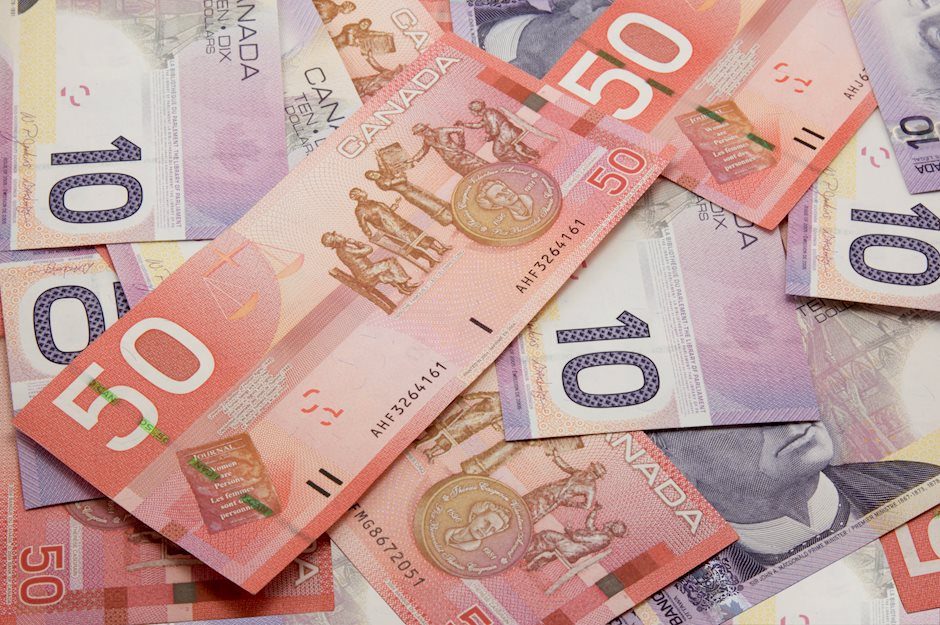USD/CAD falls toward 1.3600 ahead of employment data
- USD/CAD depreciates as softer US data raising speculations of the Fed reducing rates in 2024.
- US Nonfarm Payrolls are forecasted to show an increase of 190,000 new jobs, down from the previous reading of 272,000.
- Canada's Net Change in Employment is expected to drop to 22.5K in June, from the prior 26.7K reading.

USD/CAD extends its losing streak for the fourth successive session, trading around 1.3610 during the early European hours on Friday. This decline is attributed the weaker US Dollar (USD), which could be attributed to softer data from the United States (US) raising speculations of the Federal Reserve (Fed) reducing interest rates in 2024.
On Wednesday, US ISM Services PMI fell sharply to 48.8 in June, marking the steepest decline since April 2020. This figure was well below market expectations of 52.5, following a reading of 53.8 in May. The ADP Employment report showed that US private businesses added 150,000 workers to their payrolls in June, the lowest increase in five months. This figure fell short of the expected 160,000 and was below the downwardly revised 157,000 in May.
Traders await the US employment reports on Friday, which are expected to show a slowdown in employment growth in June. The US Nonfarm Payrolls (NFP) are expected to show an increase of 190,000 new jobs, down from the previous reading of 272,000. US Average Hourly Earnings are anticipated to moderate slightly, projected to decrease to 3.9% year-over-year from the prior 4.1% reading.
On the CAD’s front, the modest decline in crude Oil price might limit the upside of the commodity-linked Canadian Dollar (CAD), as Canada is the major crude Oil exporter to the United States. West Texas Intermediate (WTI) Oil price trades around $83.50 per barrel at the time of writing.
Recent data showed that the Organization of Petroleum Exporting Countries (OPEC) increased production in June for the second consecutive month. This indicates a potential easing of tight Oil markets in the coming months, exerting downward pressure on crude Oil prices.
Additionally, the latest Canadian composite PMI of 47.5 signaled a contraction in private-sector output and a reduction in cost pressures, suggesting that the Bank of Canada (BoC) may lower borrowing costs. This could put pressure on the Canadian dollar and support the USD/CAD pair.
On Friday, traders await the Canadian Net Change in Employment, which is expected to drop to 22.5K in June, from the previous reading of 26.7K. Meanwhile, the Canadian Unemployment Rate is projected to tick higher to 6.3% from 6.2%.
Canadian Dollar FAQs
The key factors driving the Canadian Dollar (CAD) are the level of interest rates set by the Bank of Canada (BoC), the price of Oil, Canada’s largest export, the health of its economy, inflation and the Trade Balance, which is the difference between the value of Canada’s exports versus its imports. Other factors include market sentiment – whether investors are taking on more risky assets (risk-on) or seeking safe-havens (risk-off) – with risk-on being CAD-positive. As its largest trading partner, the health of the US economy is also a key factor influencing the Canadian Dollar.
The Bank of Canada (BoC) has a significant influence on the Canadian Dollar by setting the level of interest rates that banks can lend to one another. This influences the level of interest rates for everyone. The main goal of the BoC is to maintain inflation at 1-3% by adjusting interest rates up or down. Relatively higher interest rates tend to be positive for the CAD. The Bank of Canada can also use quantitative easing and tightening to influence credit conditions, with the former CAD-negative and the latter CAD-positive.
The price of Oil is a key factor impacting the value of the Canadian Dollar. Petroleum is Canada’s biggest export, so Oil price tends to have an immediate impact on the CAD value. Generally, if Oil price rises CAD also goes up, as aggregate demand for the currency increases. The opposite is the case if the price of Oil falls. Higher Oil prices also tend to result in a greater likelihood of a positive Trade Balance, which is also supportive of the CAD.
While inflation had always traditionally been thought of as a negative factor for a currency since it lowers the value of money, the opposite has actually been the case in modern times with the relaxation of cross-border capital controls. Higher inflation tends to lead central banks to put up interest rates which attracts more capital inflows from global investors seeking a lucrative place to keep their money. This increases demand for the local currency, which in Canada’s case is the Canadian Dollar.
Macroeconomic data releases gauge the health of the economy and can have an impact on the Canadian Dollar. Indicators such as GDP, Manufacturing and Services PMIs, employment, and consumer sentiment surveys can all influence the direction of the CAD. A strong economy is good for the Canadian Dollar. Not only does it attract more foreign investment but it may encourage the Bank of Canada to put up interest rates, leading to a stronger currency. If economic data is weak, however, the CAD is likely to fall.
Author

Akhtar Faruqui
FXStreet
Akhtar Faruqui is a Forex Analyst based in New Delhi, India. With a keen eye for market trends and a passion for dissecting complex financial dynamics, he is dedicated to delivering accurate and insightful Forex news and analysis.

















